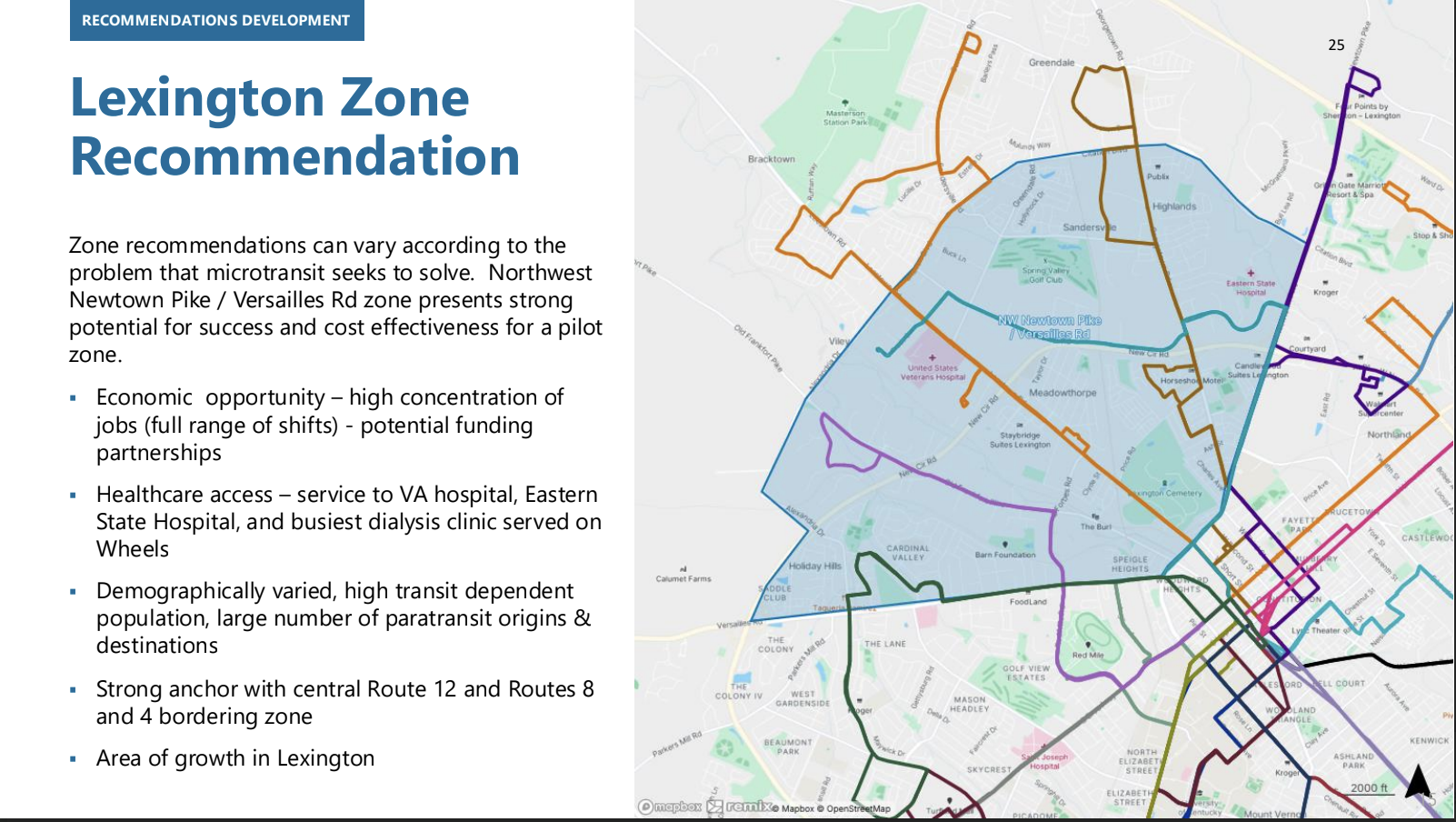Council advances new city hall proposal
By an 8-7 vote, Council narrowly approved a public-private partnership to build a new city hall on West Vine Street.
On June 3rd, Council will learn what a microtransit pilot could look like in Lexington.

In Tuesday, June 3rd's Council Work Session, Lextran General Manager Fred Combs will present an overview of LexTran's microtransit feasibility study. The feasibility study outlines how and where a microtransit service could look in Lexington, and how much it would cost to operate a pilot project.
Microtransit is a broad term used to describe public transportation that typically provides door-to-door or curb-to-curb service using smaller vehicles like cars or vans.
The study — conducted by national transportation firm Nelson\Nygaard — analyzed different areas of Lexington that could benefit most from a microtransit service.
The study recommends launching a pilot in a zone between Versailles Road and Newtown Pike, which includes employment centers, medical facilities, and a high volume of Wheels service users.

Nelson\Nygaard’s study proposes a two-year pilot with the following structure:
Trips would not operate outside the zone — riders traveling beyond it would need to transfer to a regular bus route.
The study also outlines the projected costs and expected ridership for a pilot program, which would likely total $2.3 million over two years.
Council allocated $250k in the FY26 Budget to partially fund a microtransit pilot. Additional funds — potentially from state, federal, or philanthropic sources — would be needed to implement the service.